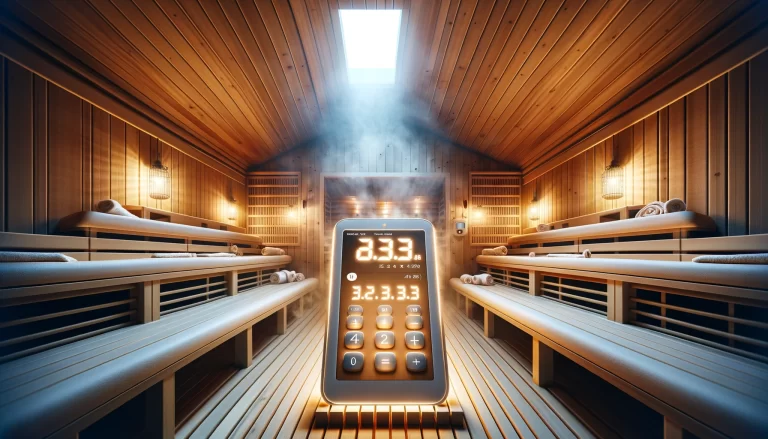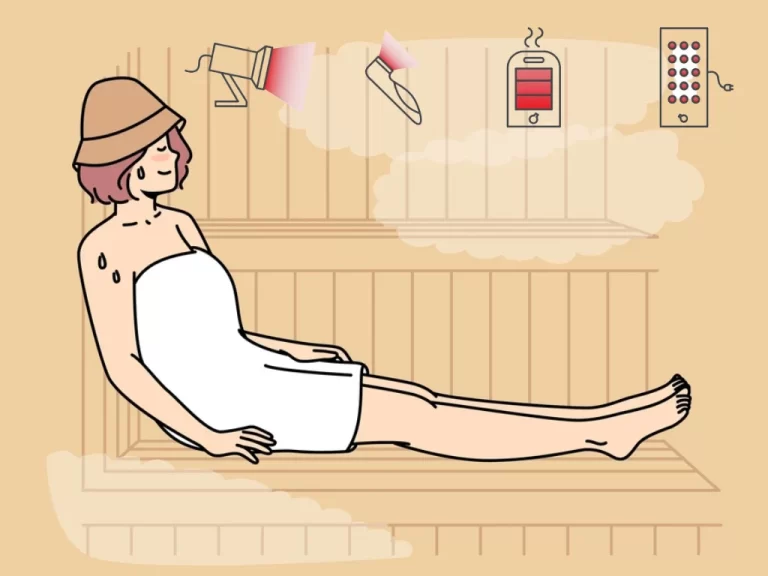Reality Check: What is Sauna Cost to Run
How much does a sauna cost to run? Find out the differences between traditional and infrared saunas, the factors that affect the running cost, and some tips to save money on your sauna experience.
Saunas are a popular way to relax and enjoy the benefits of heat therapy. They can help you reduce stress, detoxify your body, improve blood circulation, relieve pain, and enhance skin health. But how much does running a sauna in your home or garden cost? Is it worth the investment?
Types of Saunas
Before we dive into the cost breakdown, it’s essential to understand the different types of saunas available. There are three primary options:
Traditional Saunas
Traditional saunas, such as Finnish or Russian, use heated rocks to generate steam and provide dry heat. These saunas are more energy-efficient and cost-effective in the long run, as they can reach the desired temperature faster than their counterparts.
Infrared Saunas
Infrared saunas use infrared heaters to emit radiant heat directly to your body, providing gentle, less intense heat. While these saunas have lower operating costs, they may take longer to reach the desired temperature.
Steam Saunas
Steam saunas, also known as steam rooms, produce a high humidity by generating steam. These saunas are the most expensive to run due to the energy needed to create steam continuously.
- Determining Energy Costs: Now that we’ve covered the basic sauna types, it’s time to calculate the cost of running your sauna. Several factors come into play, including:
- Sauna Size: The size of your sauna directly affects its energy consumption. Larger saunas require more energy to heat up and maintain the desired temperature, resulting in higher running costs.
- Local Energy Rates: The cost of electricity or gas in your area will significantly impact your sauna’s operational expenses. Be sure to check your local utility rates to get an accurate estimate.
- Sauna Usage: How often you use your sauna and for how long each session will determine the ongoing costs. Frequent and more prolonged sessions will naturally increase your monthly energy bills.
- Insulation: Proper insulation helps retain heat, making your sauna more energy-efficient. Ensure your sauna is well-insulated to reduce energy wastage.
- Sauna Heater Efficiency: The efficiency of your sauna heater is critical. High-quality, energy-efficient heaters may cost more upfront but can save you money in the long run.
Sauna Cost Breakdown
Let’s put it all together and estimate the monthly cost of running your sauna:
- Sauna Type: Traditional Sauna
- Sauna Size: Medium
- Local Energy Rate: $0.12 per kWh
- Sauna Usage: 3 times a week, 1-hour sessions
- Insulation: Well-insulated
- Sauna Heater: Energy-efficient
We can use these variables to calculate your monthly sauna operating cost.
Monthly Cost=Energy Consumption (kWh)×Energy Rate (per kWh)Monthly Cost=Energy Consumption (kWh)×Energy Rate (per kWh)
For this example, running your sauna might cost around $20 to $40 monthly. You can use the calculator to estimate blew.
Sauna Operating Cost Calculator
Use this calculator to estimate your monthly sauna operating cost based on energy consumption and energy rate.
Cost-Saving Tips
To make your sauna experience more budget-friendly, consider the following tips:
- Opt for energy-efficient sauna heaters to reduce your energy consumption.
- Invest in proper insulation to retain heat and minimize energy waste.
- Use a timer or thermostat to control sauna temperature and session duration.
- Schedule sauna sessions with family or friends to share the cost.

Compare Sauna costs for Traditional and Infrared Saunas
| Cost Factor | Traditional Sauna | Infrared Sauna |
|---|---|---|
| Purchase Price | More expensive, ranging from $2,500 to over $10,000 depending on the size and features. | Less expensive, starting from around $2,000 for an entry-level model. |
| Installation Cost | Higher may require a custom-built room, ventilation, plumbing, and electrical wiring. | Lower, consumes less electricity to heat the body directly, and may cost 25% of a traditional sauna. |
| Operating Cost | Higher may require cleaning of the rocks, stove, and plumbing system. | Lower may require only wiping down the infrared panels and cabin. |
| Maintenance Cost | Higher may require custom-built room, ventilation, plumbing, and electrical wiring. | Higher, it consumes more electricity to heat the air and rocks, and it may cost $20 per month for one hour of use three times a week. |
The two most popular types of saunas in the USA today are:
- Electric saunas: These are the most common saunas, which use an electric stove to heat the air and rocks in a wooden cabin. The temperature and humidity can be controlled by pouring water over the rocks.
- Infrared saunas: These modern saunas use infrared panels or lamps to heat the body directly without heating the air. The temperature is lower than in a traditional sauna, but the heat feels more intense and penetrates deeper into the tissues.
Compare sauna costs for electric and infrared saunas
| Cost Factor | Electric Sauna | Infrared Sauna |
|---|---|---|
| Purchase Price | Ranges from $2,000 to over $10,000 depending on the size and features. | Ranges from $2,000 to over $10,000 depending on the size and features. |
| Installation Cost | It Consumes less electricity to heat the body directly and may cost 25% of an electric sauna. | May be compatible with standard outlets, pre-built or portable units available. |
| Operating Cost | It Consumes less electricity to heat the body directly and may cost 25% of an electric sauna. | It Consumes less electricity to heat the body directly, and may cost 25% of an electric sauna. |
| Maintenance Cost | May require cleaning of the rocks, stove, and ventilation system. | May require only wiping down the infrared panels and cabin. |
As you can see from the table, infrared saunas are generally more cost-effective than electric saunas in terms of operating cost and maintenance costs.
Rewire Your Wellbeing Through Sauna Usage
Regarding relaxation, few treatments offer the peaceful tranquillity of a sauna. This traditional steam bath gives users numerous health and wellness benefits, making it an increasingly popular treatment worldwide.
From improved lung function to deeper and more restful sleep, it offers a variety of potential physical and mental improvements. But what does it cost to run your sauna? Here’s a reality check on what you can expect for the installation, operation, maintenance, and repair costs of owning one.
Saunas are known for their calming effects on both body and mind. They provide powerful detoxification and therapeutic relief from joint pain and sore muscles.
Regular sessions can improve cardiovascular performance by increasing heart rate without increasing blood pressure or heart strain – all while burning up to 300 calories in just fifteen minutes!
Energy Efficiency Strategies
Energy efficiency strategies are becoming increasingly important today as we look for better ways to manage finite resources. By employing simple techniques, individuals and businesses can dramatically reduce their energy consumption and save money on utility bills.
The sauna is an enjoyable pastime that many people enjoy, but running it can be expensive and strain resources if not done correctly. Understanding energy efficiency strategies when using your it can help you run it more efficiently while enjoying its benefits.
Understanding the costs associated with running your sauna will allow you to make more informed decisions and give you peace of mind, knowing that you are taking steps towards reducing your environmental footprint.
Financial Benefits of Saunas
Saunas have been around for centuries, and their popularity continues to grow. Not only are they a great way to relax and unwind, but they also come with some surprising financial benefits. Whether you’re considering installing it in your home or are curious about the cost of running one, here’s a reality check on the economic benefits of saunas.
- – For starters, running an at-home sauna costs less than you think. Most residential models use electric heating elements, which keep energy bills relatively low – especially compared to other leisure forms such as swimming pools or hot tubs. A 20-minute sauna session costs $0.25 to $0.50 in electricity or $4 to $8 for store-bought wood.
- – Secondly, owning a sauna can increase the value of your home. A sauna can attract potential buyers, especially if it is well-designed, well-maintained, and energy-efficient. According to Forbes Home, a sauna can add up to 5% to the value of your home.
- – Thirdly, using a sauna can save you money on health care expenses. A sauna can provide various health benefits, such as improving blood circulation, boosting immunity, easing pain and inflammation, reducing stress and anxiety, and enhancing skin health.
These benefits can help you prevent or treat various conditions, such as high blood pressure, arthritis, asthma, insomnia, and acne. Using a sauna regularly reduces your need for medications, doctor visits, or treatments that can be costly. For more about Making infrared saunas hotter
Conclusion: on (Sauna Cost to Run)
In conclusion, the cost of running a sauna varies greatly depending on its size, type, and location. If you’re considering investing in it for your home or business, it’s essential to research and ensure you can afford the associated costs. Further, consider its benefits, such as improved sleep and cardiovascular health, which can provide significant value over time.
Find More Healing in Style
Relax like never before with our expert tips and top-notch solutions for ultimate relaxation.
Hot Tub Patio Insights
Check out simple tips and creative ideas to build your dream outdoor retreat with Hot Tub Patio.
Learn MoreCommon Queries:
How much does running a sauna cost? The cost to run a sauna depends on the size and type, whether you’re running it at home or in a commercial setting, and how often you use it.
How much does a sauna cost to install? The cost to install it varies wildly, depending on the size and type you want to be installed and the location.
What are some of the costs associated with running a sauna? The costs associated with running are often overlooked, but they shouldn’t be. These costs include utilities, maintenance, repairs, and replacement parts when necessary.
What does it cost to ship a sauna? Rates vary by carrier and distance but typically range between $ 200 and $500 for a standard sauna.
How often do you need to replace the wood in a sauna? Wood needs to be replaced every 3-5 years, depending on how often you use it and how well it’s kept.
What are the average costs of running a sauna? The average cost of running is around $100 per month or $1,200 per year. Please visit our blog post for more information on saunas and their costs.
What are the average costs of repairs and maintenance for a sauna? The average cost of repairs and maintenance is $500 per year.
How much does it cost to buy a sauna? The average price is around $5,000.
What are the average costs of electricity for a sauna? The average cost of electricity is around $100 per month or $1,200 per year.
What are the average costs of water for a sauna? The average cost of water can be $10 per month or $120 per year.
What are the average costs of cleaning supplies for a sauna? The average cost of cleaning supplies is $20 per month or $240 per year.












